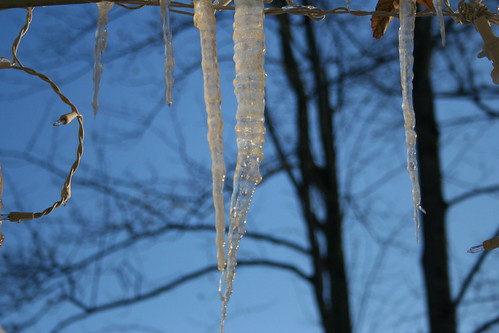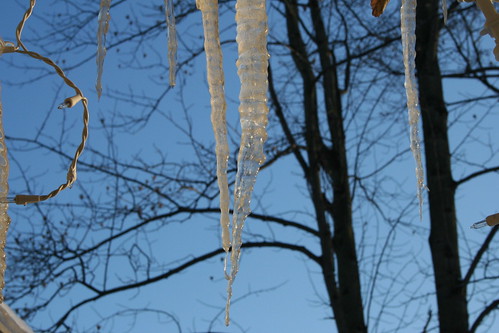Snappy Tips for Better Photos - Part 2 - The Holy Trinity
For part 2 of my Snappy Tips series, I thought I'd write an article on the basics of any camera. These are the Holy Trinity of photography; shutter speed, aperture and ISO. Photography is the "language of light", and these three are the tools you use to vary the amount of light hitting your camera's sensor. They are very simple to understand. A good analogy here is running a tap to fill a bucket of water.
If you open the tap for a small fraction of a second, say 1/60 second, a small amount of water will end up in the bucket. Whereas if you were to leave the tap open for several seconds, you would get significantly more water in the bucket. This is similar to the shutter speed on your camera; firing your shutter at 1/500 second will let much less light into your camera than say firing it at 1/4 second. Shutter speed changes the way we see time in a photograph; a long shutter speed blurs time, whereas a short shutter speed freezes action.
Using the same analogy, opening the tap wide open will similarily fill the bucket much quicker than if you slow it to a drip. The aperture control on your camera works the same way, in that it also controls the amount of light reaching your sensor but in a different manner. The primary use of aperture is to control "depth of field" - this is essentially how much of your photograph is kept in focus. For example if you were making a close up image of a flower, generally you would want the background out of focus so as not to detract from the flower itself. So if you have a wide aperture (which is referenced by a low number - eg f1.4, f2.8) this will allow a faster flow from your tap (more light into the camera), and a shallow depth of field. If you allow the tap simply to drip, then you would be using a narrow aperture (f16, f22) producing a much greater depth of field. Following so far?
No we'll throw ISO in to the equation, which for the older generation is the same as film speeds or ASAs. Using our wonderful tap & bucket scenario, ISO is similar to using different size buckets. A lower ISO number requires more light to get a good exposure, and therefore equates to a larger bucket, whereas higher ISO numbers are the opposite. Similar to film, the higher the number, the more grain (or in the case of digital, noise) you will get in your photograph. However grain in film days was often sought after for artistic effect. Noise in digital is generally bad for technological reasons that I won't bore you with here. Save to say that you generally want to be shooting at as low an ISO as possible.
Images published under Creative Commons by absoblogginlutely
So how the hell does this all affect me, and what do I do with this knowledge I hear you cry? Well it's simple. You want to fill your bucket without it overflowing. If you want to shoot an ice crystal, and you want a shallow depth of field, your tap will be fast flowing. Therefore to make the correct exposure you only open the tap for a short period (shutter speed) and / or you use a smaller bucket (ISO). Keeping up?
Imagine it's like a triangle, and you basically want to be in the middle for an average exposure (see below).
Image published under Creative Commons by BoogiesWithFish
There are a bunch of other factors that can affect this equation such as sensor size, flash but for the time being I felt it best to keep it as simple as possible. Hope this explains it all without being overly complicated. But once you've got it, it's like a light bulb going on and everything seems that little bit simpler. There's no magic, just a little bit of physics..... If you've got any questions, use the usual methods - comments below / Twitter / Facebook.....



